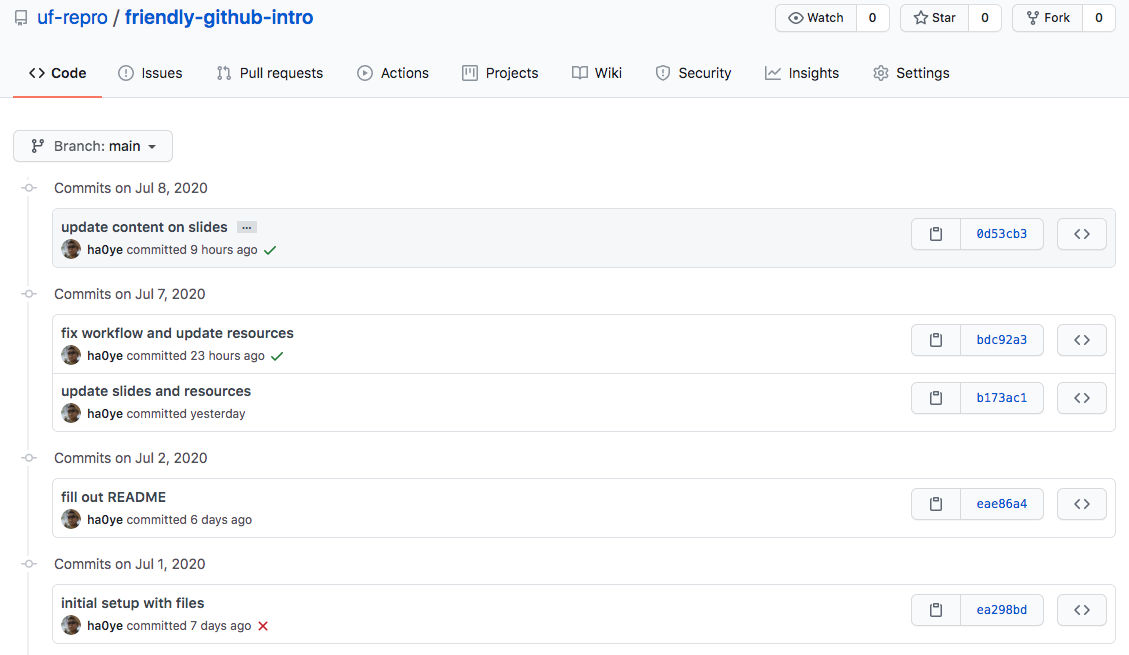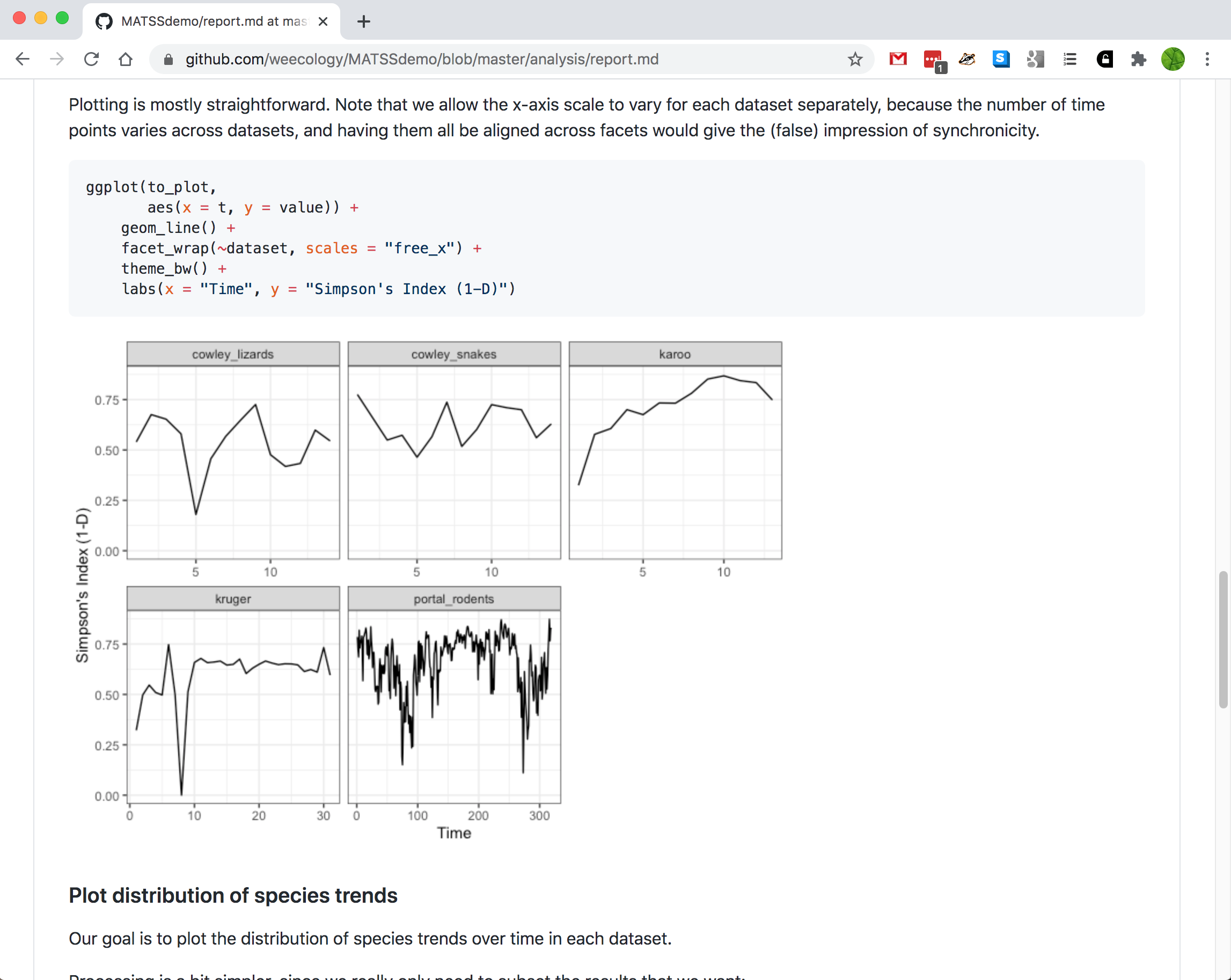Syllabus
Natya Hans, Informatics and Reproducibility Librarian Academic Research Consulting and Services, University of Florida (updated: 2023-12-07)
Intro
- Motivations Effective project management can save time, by making it easy to:
- revert back to previous versions
- collaborate together on the same files
- share your work and have it cited
- Learning Outcomes By the end of the workshop, participants will be able to:
- explain the benefits of version control
- articulate the differences between
gitandGithub - create and update repositories using Github Desktop and the Github website
- write descriptive README files
- select and apply a license to a GitHub project
- Version Control Concepts
- Version Control Tools/systems to manage changes to files. ## You are probably already using version control!
- MS Word has “track changes”
- Dropbox / Google Drive / OneDrive can restore previous versions
- What’s special about GitHub? GitHub is version control for projects. Use cases:
- changes that are not in MS Word files
- find a specific version of the project
- identify who made changes and why
- collaborate on the same files at the same time
- Example scenarios
- You change a histogram to a bar plot, and then you want to change it back.
- Your co-author makes edits while traveling, and you need to combine their changes with changes you made in the meantime.
- You want to experiment with a different dataset / analysis / narrative without duplicating everything. GitHub helps you do all of these!
- Git and GitHub ## (not the same thing!)
- Git
-
Gitis the name of the software and version control system - notoriously unfriendly
- commands have unintuitive names
- error messages are obscure This workshop does NOT teach you to use Git directly!
- check out the resources page for tutorials, guides, etc. We will learn essential terms and concepts. We will interact with Git through the GitHub website and the GitHub Desktop software.
-
- Git Concepts
- In Git, a project corresponds to a computer folder
- the folder is called a repository or repo
- Git tracks changes to all files and subfolders in that folder
- Changes are recorded by taking snapshots of the folder contents:
- each snapshot is called a commit and represents a specific project version

- each snapshot is called a commit and represents a specific project version
- In Git, a project corresponds to a computer folder
- About Commits
- each commit has a commit message
- 1-line summary (required)
- blank line (optional)
- further details
- commits also record who and when (automatically)

- each commit has a commit message
- Creating Commits Commits are constructed manually - you tell git what to include.
-
addfiles that have changed (including new files) - Git only records changes (ignoring unchanged files)
- one common method is to
addall files A commit message is required!
-
- Why so tedious?
- The commit procedure is more work than a simple button press!
- This procedure gives you control over which changes are recorded in each commit
- if you make edits in multiple files, you can group the changes into meaningful commits
- The commit message is important to find correct versions later
- GitHub
- a cloud platform that hosts Git repos
- can host unlimited # of public and private repos
- size limits:
- 1 GB for each repo (recommended for performance reasons)
- 50 MB for individual files
-
GitHub Education has some benefits
- one code for a free t-shirt from https://github.myshopify.com/ to be given away to a random attendee
- GitHub in a Web Browser
- Using GitHub https://github.com
- create an account / log in
- create a new repo
- add text files (in browser) or upload files
- write a commit message
- DEMO
- Using Git Clones
- About Clones If you want to backup files, you can make a copy to another location (external drive, cloud storage, etc.). What about a project folder AND its history? A git clone is not just a copy of the project files, but also its entire history.
- Synchronizing Repos
- Git is designed to be decentralized – repos can exist in multiple locations:
- clone = “make a copy of a Git repo”
- push = “send new commits from here to somewhere else”
- pull = “retrieve new commits from somewhere else to here”
- Git is designed to be decentralized – repos can exist in multiple locations:
- Working with Git clones
- you need the
Gitsoftware- instructions from Software Carpentry
-
guide to command-line usage
(too advanced for this workshop)
-
GitHub Desktop
- graphical interface for Git
- also syncs your computer with GitHub
- you need the
- DEMO
- Best Practices for Git Repos
- Readme A
README.mdfile in the primary folder shows on the github webpage for the repo. It should include:- what the project is about
- who is working on it
- who is it for
- installation/usage instructions
- citation info
- License A
LICENSEfile in the top directory describes how other people can use the work.- by default, in the US, you have full rights on creative works Recommended permissive licenses, based on content type:
- MIT (code)
- CC-BY (non-code)
- CC0 (public-domain, data)
- by default, in the US, you have full rights on creative works Recommended permissive licenses, based on content type:
- Adding a license
- when creating a new repo, you have the option of choosing the template for an existing license
- on github.com, adding a file named
LICENSEbrings up a button:
- Markdown
- GitHub will render some common file formats directly in the web browser:
- images, plain text
- markdown is preferred for formatting text and images
- uses plain text, but renders nicely
-
a guide to syntax example report

- GitHub will render some common file formats directly in the web browser: